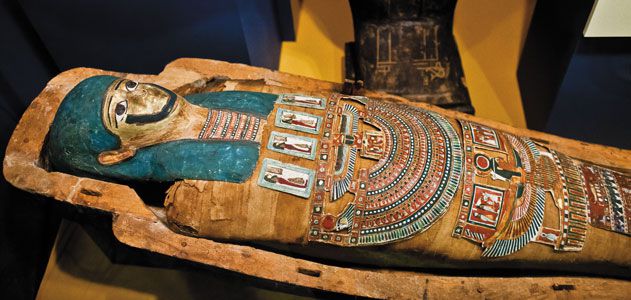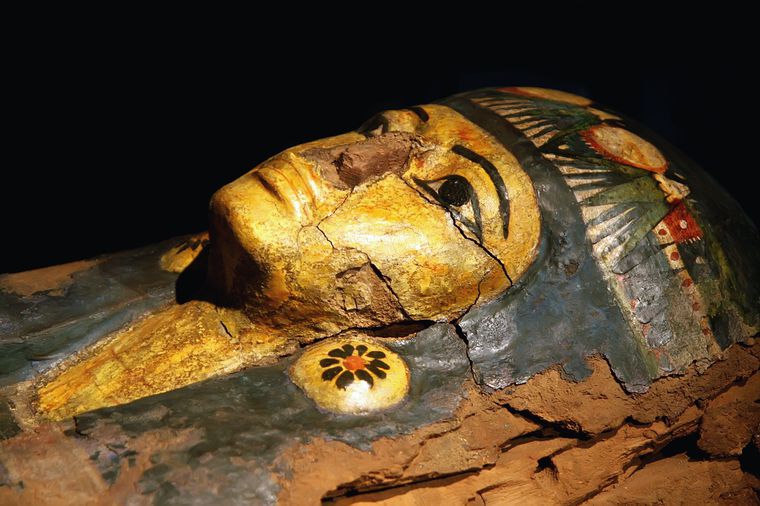It has been almost two hundred years since the hieroglyphs were deciphered and Egyptology was inaugurated, yet, to this day, ancient Egypt, with its people and culture, remains an enigma. Despite the colossal, ages-long worldwide effort to unravel Egypt’s ancient history, this multilayered period of time continues to surprise both the experts and the public alike, attesting to the fact that there is always more to learn about ancient Egypt.
The Gebelein mummies, named after the area in which they were unearthed, have been put on display in the British Museum shortly after their discovery in Egypt in the year 1900. For nearly two centuries, the six mummies resting were not disturbed; that was until the museum took the decision to reexamine some of its most valuable artifacts. In their analysis, the museum staff discovered that two of these mummies bear tattoos. In fact, these two mummies are inked with the world’s earliest figurative tattoos, which are tattoos that represent imagery.

The mummies, which date back to anywhere between 3351 B.C. and 3017 B.C., belong to a man and a woman, negating the old archaeological hypothesis that only women had tattoos in ancient Egypt.
The tattoos, which, at first glance, appear as a smudge, were reexamined using infrared irradiation, making the skin markings more visible. Scientists found out that the male body carried images of what appears to be a wild bull and a Barbary sheep. The female mummy, on the other hand, had “four “S”-like symbols on her top shoulder joint and an “L”-shaped line on her abdomen that archaeologists think might be a stave or wooden staff.”

“The sheep is quite commonly used in the predynastic [Egyptian period] and its significance is not well understood, whereas the bull is specifically to do with male virility and status,” said study author and British Museum curator Daniel Antoine to National Geographic in 2018. As for the female’s tattoos, it is still unclear what they represented.
This is not the first evidence that comes from ancient Egypt on the practice; it is, however, the oldest of its kind. Artifacts from the Middle Kingdom include statuses of women bearing tattoos. Later evidence showed that many of the tattooed women were priestesses to Hathor, the sky goddess associated with motherhood, maternal care, and fertility.
Early archaeologists of colonial Europe projected their biases on tattooed women of ancient Egypt claiming that they were dancing girls of low class, but new evidence suggests that these tattoos had a myriad of implications and that females of many different social classes chose to wear them.

Archaeologists believe that some women chose to bear the tattoo of Hathor as some sort of mystical protection for unborn children during pregnancy; this tattoo resembled a net on the belly region forming a symbolic barrier between the fetus. Others chose to wear tattoos of the protector God Bes on their inner thighs for the same reason.
It seems that unlike us, the people of ancient Egypt did not wear tattoos to adorn their bodies but to serve a higher purpose, a godly-one. The practice draws similarities in different regions around the world, including here in Egypt, where most Coptic Orthodox Christians wear a tattoo of a cross on their forearms to praise Christ and ask for protection.
Maybe, despite the 5,000 years of history that stand between us and the Gebelein mummies, we are not so different after all.



